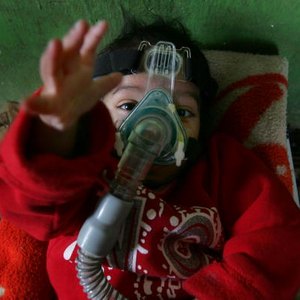
Continuous Positive Airway Pressure devices, which treat patients with Obstructive Sleep Apnea, record a variety of data and store it on chips or smart cards. The data is principally used to make sure that the patient is complying with CPAP therapy, a verification required by insurance companies. But the stored information can also give clinicians insight into the nature of the patient's apnea and the effectiveness of CPAP treatment.
Usage Data
Nearly all CPAP machines store data that indicate whether the patient is complying with CPAP therapy. This includes the total number of hours the machine has been on, as well as the total number of days in which the machine has operated for the minimum amount of time required for compliance. Using compatible software, the clinician can see what percentage of days in any given period the patient has used the machine.
Apnea - Hypopnea Events
CPAP devices typically record the times the patient has stopped breathing (apnea) or has breathed too slowly or irregularly (hypopnea). In addition, they can also classify apnea events as obstructive (due to a blocked airway), central (due to the fact that the patient is not even attempting to breath) or unknown. This data can indicate whether the patient needs a greater prescribed air pressure, or whether CPAP therapy is appropriate for the patient.
Flow And Pressure Data
Auto CPAP devices actually change the amount of pressure they deliver to the mask in response to patient breathing patterns. These devices record the actual minimum and maximum pressures they have delivered. They can also estimate and record the amount of air actually entering the lungs, as well as events in which there is a partial blockage of the airway.
External Sensor Data
Many CPAP machines can connect with pulse oximeters that the patient wears during sleep. When configured in this way, the machines can record heart rate and blood oxygen levels, so that doctors can see how well therapy is doing to normalize both measurements.
References
Writer Bio
Scott Knickelbine began writing professionally in 1977. He is the author of 34 books and his work has appeared in hundreds of publications, including "The New York Times," "The Milwaukee Sentinel," "Architecture" and "Video Times." He has written in the fields of education, health, electronics, architecture and construction. Knickelbine received a Bachelor of Arts cum laude in journalism from the University of Minnesota.

